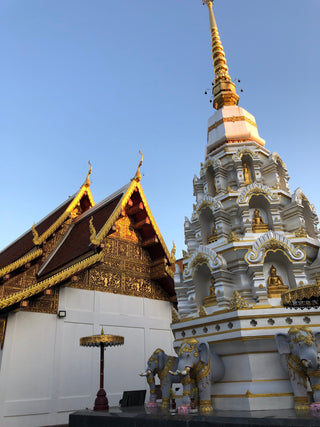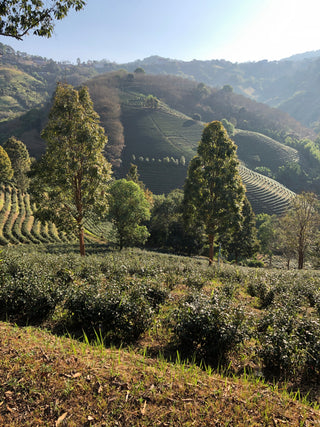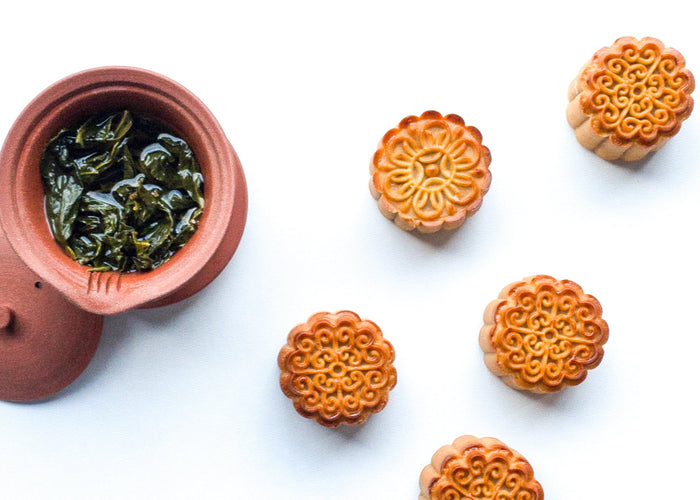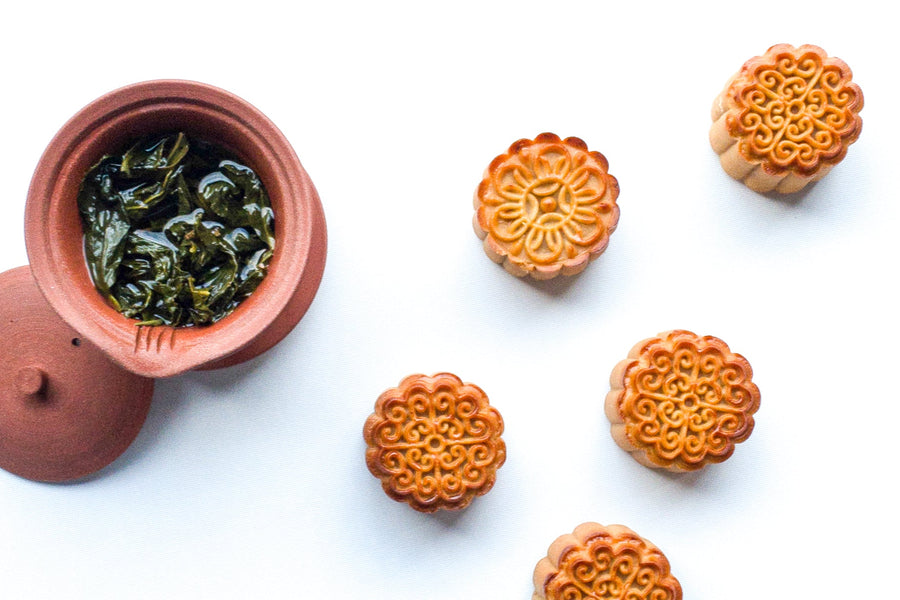Thai teaselection
We've brought a selection from the unique tea regions of Northern Thailand to enrich your moments with an extraordinary flavor journey. Our selection features three teas based on the Ruan Zhi tea cultivar: two green oolongs and an exceptional black tea. Each of these teas uniquely reflects the richness of the tropical climate and the art of traditional tea-making.
Siam Seventeen 2023 Spring Harvest – 50g, green oolong tea
Siam Seventeen 2023 Autumn Harvest – 30g, green oolong tea
Siam Oriental Beauty Black 2023 – 50g, black tea
- Unit price
- /per
We've brought a selection from the unique tea regions of Northern Thailand to enrich your moments with an extraordinary flavor journey. Our selection features three teas based on the Ruan Zhi tea cultivar: two green oolongs and an exceptional black tea. Each of these teas uniquely reflects the richness of the tropical climate and the art of traditional tea-making.
Siam Seventeen 2023 Spring Harvest – 50g, green oolong tea
Siam Seventeen 2023 Autumn Harvest – 30g, green oolong tea
Siam Oriental Beauty Black 2023 – 50g, black tea
Adding product to your cart
The tea tradition of Northern Thailand dates back over 600 years. During the Ming dynasty, when Yunnan and surrounding areas were part of the Chinese Empire, the local governor ordered the planting of tea trees in northern Laos, Burma, and Thailand to capitalize on the popularity of Yunnan teas. In our selection, we showcase teas from oolong-growing regions influenced by Chinese practices.
From the 1970s, with the help of Taiwan, local Chinese began cultivating tea. They planted many well-known Taiwanese varieties and adopted tea-growing techniques learned from Taiwan. Due to the intense heat and completely different climate conditions, the teas produced here have a distinctly different style. The tea plantations are typically situated on northern or eastern slopes to prevent excessive sunlight from damaging the tea plants.
The three most famous oolong cultivars in Northern Thailand are Jin Xuan (No. 12), Qing Xin, and Ruan Zhi (No. 17). Ruan Zhi, also known as "Soft Stem" (軟枝), was cultivated by the Taiwan Tea Research Institute. It is most similar to the Qing Xin cultivar in nobility and style, but it is a more playful and lively tea. It seems to have adapted better to the Thai environment, where it is far more popular. We present three teas made from this cultivar: a spring and autumn harvest green oolong, as well as a sweeter black tea produced from insect-bitten leaves. All three teas come from fully organic farming.
The tea tradition of Northern Thailand dates back over 600 years. During the Ming dynasty, when Yunnan and surrounding areas were part of the Chinese Empire, the local governor ordered the planting of tea trees in northern Laos, Burma, and Thailand to capitalize on the popularity of Yunnan teas. In our selection, we showcase teas from oolong-growing regions influenced by Chinese practices.
From the 1970s, with the help of Taiwan, local Chinese began cultivating tea. They planted many well-known Taiwanese varieties and adopted tea-growing techniques learned from Taiwan. Due to the intense heat and completely different climate conditions, the teas produced here have a distinctly different style. The tea plantations are typically situated on northern or eastern slopes to prevent excessive sunlight from damaging the tea plants.
The three most famous oolong cultivars in Northern Thailand are Jin Xuan (No. 12), Qing Xin, and Ruan Zhi (No. 17). Ruan Zhi, also known as "Soft Stem" (軟枝), was cultivated by the Taiwan Tea Research Institute. It is most similar to the Qing Xin cultivar in nobility and style, but it is a more playful and lively tea. It seems to have adapted better to the Thai environment, where it is far more popular. We present three teas made from this cultivar: a spring and autumn harvest green oolong, as well as a sweeter black tea produced from insect-bitten leaves. All three teas come from fully organic farming.













